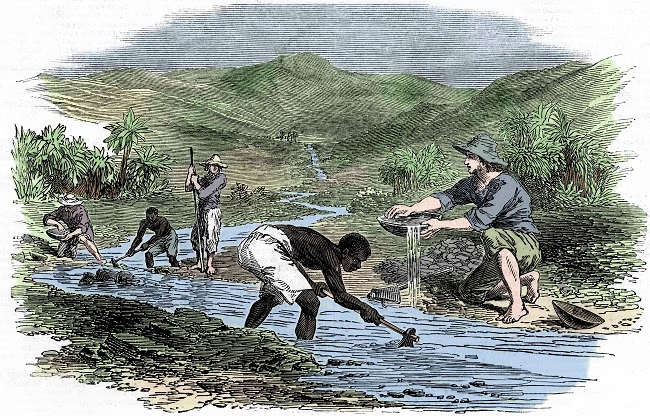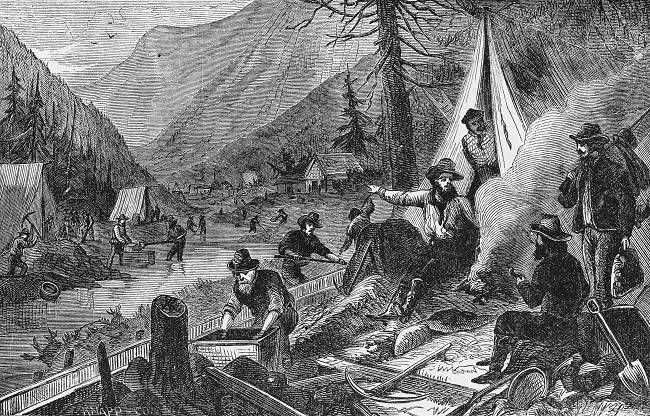Across the globe, numerous rivers harbor gold deposits along their banks, cities sprang up around such rivers due to this allure. This phenomenon originated in California when gold was discovered along the sands of the Sacramento River. The news spread like wildfire, attracting thousands to California. Subsequently, gold rushes emerged around the world.
On January 24, 1848, James Wilson Marshall was performing carpentry work at a mill beside the river when he stumbled upon gold pieces. He quickly informed the mill owner, a Swiss citizen, who verified the findings' authenticity. Although they attempted to keep this a secret, the news inevitably leaked, causing an upheaval. At that time, California's population was about six thousand, including only seven hundred foreigners, but the gold discovery catalyzed a population boom.
The revelation began with an event in San Francisco. A local storekeeper went to verify the news at the riverbank and also struck gold. Once confirmed, the entire San Francisco was deserted. Everyone, from storekeepers to major tradespeople, had relocated to the river. According to a report from The History, by June of that same year, three-quarters of the city's population had vanished, relocating to the riverbanks in search of gold, thus marking the onset of the Gold Rush.

Source: aajtak
However, did this gold make everyone rich? No, but it did spark a significant shift. By 1849, a substantial portion of America's male population had either taken loans or mortgaged their homes and land to embark on this pursuit, transferring the responsibility of nurturing families to women. This marked the beginning of an era where American women expanded their roles by stepping out for work and managing businesses for the first time.
Throughout this Gold Rush, over 750,000 pounds of gold were mined; however, surface-level deposits were soon depleted. This era witnessed the initiation of hydraulic mining, which facilitated further gold extraction. As surface gold diminished, operations continued, prompting the court to ban hydraulic mining due to potential risks, transitioning California towards agriculture and farming. Today, much of this area houses historic parks that narrate the tales of the Gold Rush to visitors.
The Gold Rush extended beyond California's riverbanks, as gold deposits were subsequently discovered along rivers in various countries. This was a result of geological processes that had been occurring but went unnoticed until the Californian discovery brought global attention to them.

Source: aajtak
Why Do Rivers Have Gold? - Gold traces originally exist in mountains. As the weather changes, mountains erode, breaking up the gold into small particles. - Gold particles travel downstream along mountain rivers and settle due to gravity, a process called sedimentation. - River mud and sand often act as natural filters, depositing gold particles at various riverbanks.
Which Rivers in the Country Have Gold? In our region, rivers with gold deposits are found, particularly in Karnataka, Andhra Pradesh, and Jharkhand. Gold mines are located near Karnataka's Kolar River, with Jharkhand's Suvarnarekha River bearing a name derived from gold. Apart from gold, other minerals like uranium and chromium are also found in these areas. Gold particles are also found in the Damodar River, which spans across West Bengal and Jharkhand.




